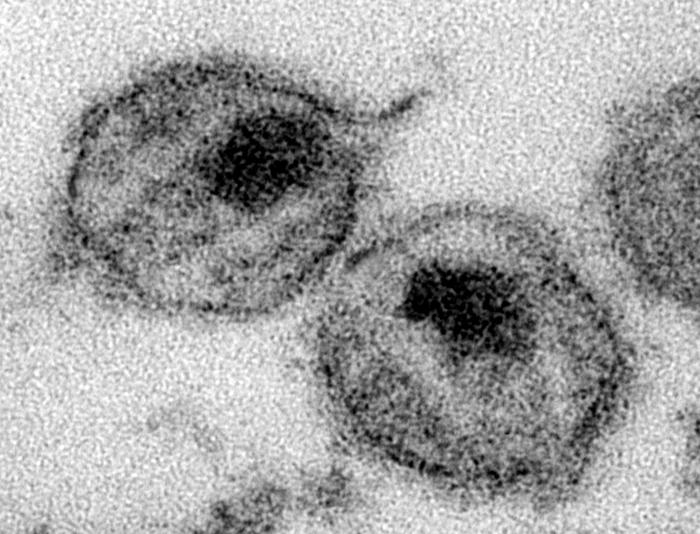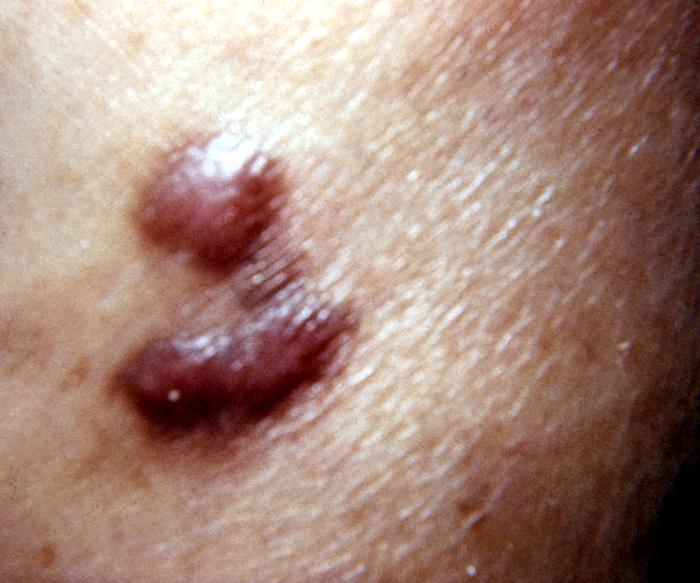HIV AIDS classification
|
AIDS Microchapters |
|
Diagnosis |
|
Treatment |
|
Case Studies |
|
HIV AIDS classification On the Web |
|
American Roentgen Ray Society Images of HIV AIDS classification |
|
Risk calculators and risk factors for HIV AIDS classification |
For AIDS Patient Information click here Editor-In-Chief: C. Michael Gibson, M.S., M.D. [1]
Overview


Since June 5, 1981, many definitions have been developed for epidemiological surveillance such as the Bangui definition and the 1994 expanded World Health Organization AIDS case definition. However, clinical staging of patients was not an intended use for these systems as they are neither sensitive, nor specific. In developing countries, the World Health Organization staging system for HIV infection and disease, using clinical and laboratory data, is used and in developed countries, the Centers for Disease Control (CDC) Classification System is used.
Classification
WHO disease staging system for HIV infection and disease
In 1990, the World Health Organization (WHO) grouped these infections and conditions together by introducing a staging system for patients infected with HIV-1.[1] An update took place in September 2005. Most of these conditions are opportunistic infections that are easily treatable in healthy people.
- Stage I: HIV infection is asymptomatic and not categorized as AIDS
- Stage II: includes minor mucocutaneous manifestations and recurrent upper respiratory tract infections
- Stage III: includes unexplained chronic diarrhea for longer than a month, severe bacterial infections and pulmonary tuberculosis
- Stage IV: includes toxoplasmosis of the brain, candidiasis of the esophagus, trachea, bronchi or lungs and Kaposi's sarcoma; these diseases are indicators of AIDS.
CDC classification system for HIV infection
In the beginning, the Centers for Disease Control and Prevention (CDC) did not have an official name for the disease, often referring to it by way of the diseases that were associated with it, for example, lymphadenopathy, the disease after which the discoverers of HIV originally named the virus.[2][3] They also used Kaposi's Sarcoma and Opportunistic Infections, the name by which a task force had been set up in 1981.[4] In the general press, the term GRID, which stood for Gay-related immune deficiency, had been coined.[5] However, after determining that AIDS was not isolated to the homosexual community,[4] the term GRID became misleading and AIDS was introduced at a meeting in July 1982.[6] By September 1982 the CDC started using the name AIDS, and properly defined the illness.[7] In 1993, the CDC expanded their definition of AIDS to include all HIV positive people with a CD4+ T cell count below 200 per µL of blood or 14% of all lymphocytes.[8] The majority of new AIDS cases in developed countries use either this definition or the pre-1993 CDC definition. The AIDS diagnosis still stands even if, after treatment, the CD4+ T cell count rises to above 200 per µL of blood or other AIDS-defining illnesses are cured.
HIV test
Many people are unaware that they are infected with HIV.[9] Less than 1% of the sexually active urban population in Africa has been tested, and this proportion is even lower in rural populations. Furthermore, only 0.5% of pregnant women attending urban health facilities are counseled, tested or receive their test results. Again, this proportion is even lower in rural health facilities.[9] Therefore, donor blood and blood products used in medicine and medical research are screened for HIV.
HIV tests are usually performed on venous blood. Many laboratories use fourth generation screening tests which detect anti-HIV antibody (IgG and IgM) and the HIV p24 antigen. The detection of HIV antibody or antigen in a patient previously known to be negative is evidence of HIV infection. Individuals whose first specimen indicates evidence of HIV infection will have a repeat test on a second blood sample to confirm the results. The window period (the time between initial infection and the development of detectable antibodies against the infection) can vary since it can take 3–6 months to seroconvert and to test positive. Detection of the virus using polymerase chain reaction (PCR) during the window period is possible, and evidence suggests that an infection may often be detected earlier than when using a fourth generation EIA screening test. Positive results obtained by PCR are confirmed by antibody tests.[10] Routinely used HIV tests for infection in neonates, born to HIV-positive mothers, have no value because of the presence of maternal antibody to HIV in the child's blood. HIV infection can only be diagnosed by PCR, testing for HIV pro-viral DNA in the children's lymphocytes.[11]
References
- ↑ World Health Organization (1990). "Interim proposal for a WHO staging system for HIV infection and disease". WHO Wkly Epidem. Rec. 65 (29): 221&ndash, 228. PMID 1974812.
- ↑ Centers for Disease Control (CDC) (1982). "Persistent, generalized lymphadenopathy among homosexual males". MMWR Morb Mortal Wkly Rep. 31 (19): 249&ndash, 251. PMID 6808340.
- ↑ Barré-Sinoussi F, Chermann JC, Rey F; et al. (1983). "Isolation of a T-lymphotropic retrovirus from a patient at risk for acquired immune deficiency syndrome (AIDS)". Science. 220 (4599): 868–871. doi:10.1126/science.6189183. PMID 6189183.
- ↑ 4.0 4.1 Centers for Disease Control (CDC) (1982). "Opportunistic infections and Kaposi's sarcoma among Haitians in the United States". MMWR Morb Mortal Wkly Rep. 31 (26): 353&ndash, 354, 360&ndash, 361. PMID 6811853.
- ↑ Altman LK (1982-05-11). "New homosexual disorder worries officials". The New York Times.
- ↑ Kher U (1982-07-27). "A Name for the Plague". Time. Retrieved 2008-03-10.
- ↑ Centers for Disease Control (CDC) (1982). "Update on acquired immune deficiency syndrome (AIDS)—United States". MMWR Morb Mortal Wkly Rep. 31 (37): 507&ndash, 508, 513&ndash, 514. PMID 6815471.
- ↑ "1993 Revised Classification System for HIV Infection and Expanded Surveillance Case Definition for AIDS Among Adolescents and Adults". CDC. 1992. Retrieved 2006-02-09.
- ↑ 9.0 9.1 Kumaranayake L, Watts C (2001). "Resource allocation and priority setting of HIV/AIDS interventions: addressing the generalized epidemic in sub-Saharan Africa". J. Int. Dev. 13 (4): 451&ndash, 466. doi:10.1002/jid.798.
- ↑ Weber B (2006). "Screening of HIV infection: role of molecular and immunological assays". Expert Rev. Mol. Diagn. 6 (3): 399–411. doi:10.1586/14737159.6.3.399. PMID 16706742.
- ↑ Tóth FD, Bácsi A, Beck Z, Szabó J (2001). "Vertical transmission of human immunodeficiency virus". Acta Microbiol Immunol Hung. 48 (3–4): 413–27. PMID 11791341.